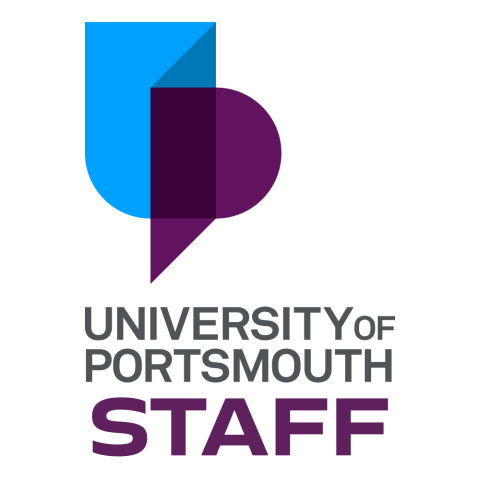
Employers use application forms to compare candidates. This is often your first opportunity to make an impression. Follow our advice to make your application stand out.
Before you start
Spending time preparing your application will improve your chances of success.
Step 1: Gather key information
Before filling out the form, collect:
-
A copy of the job advert, job description, and person specification
-
Your CV and any previous applications
-
Notes on your skills, experience, and achievements
-
Background research on the employer
Step 2: Read the instructions carefully
-
Look for word limits and deadlines
-
Check how the employer wants you to submit the form
-
Draft your answers on a different document before submitting
-
Save a copy of your application for future reference
Filling in your application form
A successful application form demonstrates how you meet the employer’s criteria and encourages them to invite you to an interview.
Common sections in an application form
Application forms will vary but most will include the following sections:
- Personal details – Your name, contact details, and basic information.
- Education – Your qualifications, including subjects and grades.
- Work experience – Jobs, placements, internships or voluntary work you’ve done.
- Competency questions – Examples that show you have the right skills.
- Personal statement – A summary of why you are suitable for the role.
- References – Contact details for academic or professional referees.
Writing style
Employers want candidates who can communicate clearly and professionally. To make your application strong use action words such as delivered, created, improved, or managed etc where possible to help convey your experience effectively. Try and keep sentences short and to the point, and use keywords from the job description to help you match your answers to the job criteria.
Using the job criteria or person specification
The person specification sets out the knowledge, skills and experience the employer is looking for. You can use this to plan and structure your application form answers.
Here are some tips on how to prove you meet the criteria.
The criteria is often split into ‘essential’ and ‘desirable’ requirements. You can use this information to decide if you're suitable for the role. You'll need to be able to demonstrate that you have a majority of the 'essential' criteria to make it through to the next stage. Think carefully about each criteria - you may have evidence that you could provide from a related field or experience gained on your course. You might not have the specific experience required, but you might gain some credit.
Work through the person specification mapping your skills and experience to the requirements. Plan this out on a list or use a mind map if it helps to view it visually. You need to draw upon examples from different areas of your study and experience; so plan out which evidence is best suited to each area of the person specification.
You need to provide clear evidence that you can meet the criteria. It is not enough to simply state that you meet the requirement. Provide specific and detailed examples from your study, work and interests.
You can use the same order and headings provided in the person specification to structure your answer. This will make it easier for the employer to read your form and match your experience to the job criteria.
Answering questions
Employers ask different types of questions to assess your suitability.
Competency-based questions
These focus on skills needed for the job. Examples include:
-
Tell us about a time you worked in a team. What was your role and what was the outcome?
-
Give an example of when you solved a problem. How did you approach it?
Use the STAR technique to structure your answer:
Situation – set the scene:
"In my final year, I needed to complete my dissertation alongside working part-time at X company. In addition, I also had responsibility as the Secretary for the University Athletics Society. I needed to balance these challenges and keep to all the set deadlines."
Task – explain your role:
"I had to achieve sales targets whilst in my part-time job and keep to a research schedule for my dissertation. I was also involved in the organisation of both local and regional athletics meetings as part of my remit for the athletic club members."
Action – describe what you did:
"I reviewed the requirements and expectations for each area in discussion with tutors and colleagues. I was able to assess the scale of the tasks and used a spreadsheet to identify and track all commitments. I decided upon appropriate and achievable timings to ensure that each objective was satisfactorily met within the relevant deadline."
Result – outline the outcome
"All tasks were completed to a satisfactory standard and within agreed deadlines."
Strengths-based questions
These assess what you enjoy and are naturally good at. Examples include:
- When did you achieve something you were really proud of?
- Describe a successful event you have contributed to.
Be honest and highlight your enthusiasm for the role.
Writing a personal statement
Many application forms include a personal statement section where you explain why you’re the right candidate.
How to structure your statement
-
Start strong – introduce yourself and highlight your key strengths
-
Follow the job description – use the employer’s headings to match their requirements
-
Provide evidence – use examples from your studies, work experience, or volunteering
-
Show motivation – explain why you’re interested in the job and company
-
Conclude well – summarise why you’re a good fit

Example opening sentence:
"I am a recent [degree] graduate with experience in [key skill/industry]. I have developed strong [relevant skills] through [work experience, volunteering, or projects], making me a strong candidate for this role."
Submitting your application
Before submitting, check:
- You have answered every question fully
- Your spelling and grammar are correct
- You have followed any word limits or formatting requirements
You should also save a copy of your application in case you're invited to interview and to help with future applications.
If possible, ask someone you trust to review your application before you send it. Our advisers are also on hand to review your applications through our 1-1 appointments.
Speculative applications
If a company isn’t advertising a role, you can still apply by sending a speculative application.
When you should use speculative applications
Speculative applications work well for:
-
Smaller companies that don’t regularly advertise jobs
-
Industries where jobs are often filled through networking (such as media, law, or consulting)
-
Gaining work experience or internships
How to write a speculative application
Keep a record of the companies you contact so you can follow up later.
Follow our simple steps to creating a speculative application
You can find contact details through our MyCareer organisations page, our Career Guides, or through LinkedIn or contacts from career events. Try to target your application to a named individual.
You should target the company you're applying to ensure you explain:
- Why you're interested in the company
- What skills and experience you can offer
- What type of role or experience you’re looking for
You can learn how to tailor you CV through our CV Writing Toolkit
This will demonstrate your enthusiasm for working for the company - if you plan on making a follow-up call, say so in your cover letter.
Disability disclosure
Deciding whether to disclose a disability is a personal choice. You may want to consider:
-
Whether adjustments would help you during the application process
-
If the role requires specific physical or cognitive abilities
-
How and when to discuss your needs with an employer
For advice, speak to a careers adviser or refer to our equality and diversity employment guide.
Explore more in Applications
CV writing toolkit
Check out our CV Writing Toolkit, with 5 key steps to ensure you have a standout CV!

Writing a cover letter
Find out how to structure your cover letter so it grabs an employer's attention, and makes a positive impact on your overall job application.

Career guides
Explore more than 40 industry guides and learn about the knowledge and experience you need to find a job in your dream sector.







